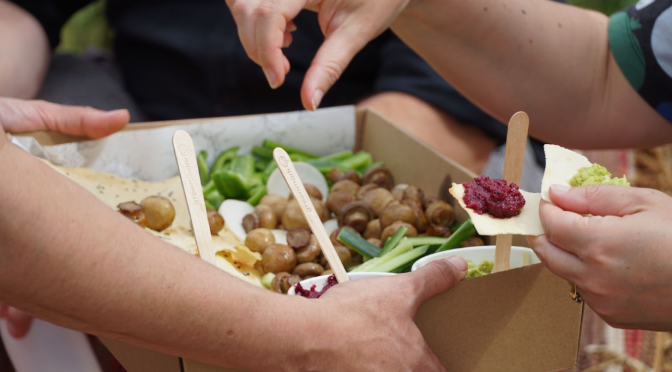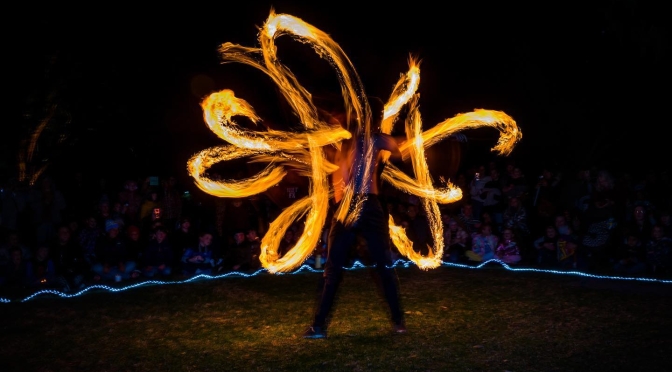Along a well-known part of Melbourne’s Bayside, a new Singing Walking Trail is fine tuning walkers into their environment through a series of songs telling stories that incite fresh knowledge and new perspectives of its familiar landscape.
Back during the murky depths of the 2020 lockdown, plans for the Elwood Singing Walking Trail were conceived and hatched by local choir leader and project facilitator, Jeannie Marsh. Originally intended to lift the spirits of Jeannie’s Elwood Community Choir at a time when singers were isolated from each other, a key focus of the project is connection, a cornerstone of all Jeanie’s work, and this spirit has flowed outwards from the choir, to the broader community of Elwood.
“It was planned to be something that was accessible to anyone, irrespective of their situation whether they were living alone, home-schooling or whatever, to help combat feelings of loneliness and isolation, an activity to connect people more closely to their environment by sharing knowledge and stories of the local area using music and songs to keep everyone together and healthy in all ways.”
With an initial grant from the City of Port Phillip, Jeannie and the choir embarked on a research and development plan in late 2020/early 2021. “We came up with these 12 songs and a little route with 12 stops around Elwood starting at the Neighbourhood Learning Centre where we rehearse, then going along the canal to the beach and ending back at the King of Tonga Bar which is across the road from where we rehearse, for a drink.” The resulting ‘self-guided musical stroll’ was officially launched and gifted to the fortunate community of Elwood through the hard work and dedication of the choir and Jeannie, in October 2022.
The stroll takes in 12 sites along a 6.8km stretch around Elwood, telling an oral history through songs celebrating a wonderfully broad range of local topics from weavers to water rats; music halls to middens; sourdough to ‘spotties’; migration and many more to delight and enlighten listeners of all ages.
The trail also shines a light on the historical relevance of the place now called Elwood, back when it was an area of plentiful sustenance for First Nations people, long, long before it became the Bay as we know it today. Before the waters came pounding through the Heads to transform the woodlands and wetland swamp into Port Phillip Bay, or ‘Nerm’ – the name given to the bay by First Nations people, as told to European settlers – Elwood was a site where kangaroos played, and eels and shellfish could be plentifully sourced. Jeannie has woven this history into a song called Nerm which can be listened to at song site 8 to encourage us to think beyond the immediacy of what we see when we look out towards the bay, and to reflect upon its legacy and the need to treat it with respect and care.
A soft launch for the ESWT was held in May 2021 and a second grant, combined with $6k raised by the choir at an auction, was then used for phase two of the project: compiling sing-along resources, marketing and promotional material to spread the word and promote the route. Jeannie recalls being struck by such a clear demonstration of passion and support for the project: “We have a number of visual artists within the group as well as a sculptor who all donated work; Rebecca Barnard came and sang for us; Tracy Harvey was the auctioneer and the choir members and their families were all very generous, it was really lovely.”
Audio engineer James Hodson who had worked with Jeannie on a number of other projects came on board as the choir’s ‘fantastic’ audio guy, “you couldn’t do a project like this without somebody like James.” James is a multi-instrumentalist and when it came to songs such as Carry On, the 1931 song by Jack O’Hagan located at song site 3, James got in there and did an arrangement like a 1930s dance band playing all of the instruments himself. Carry On was written to raise people’s spirits during the Depression and, 90 years later, it has come back into its own to tell the story of Elwood’s music hall history.
Each of the 12 song sites is marked out by an illustration by local illustrator Consuelo Fernandez-Ortiz, and is accompanied by a QR code for access to information on the area, as well as links to a YouTube clip of the song and resources for singers such as sheet music and words to each song. “People can do the trail at any time because it’s self-guided. You can do the whole thing in one day and stop off somewhere for lunch, or find a site that you like, sit there as often as you like and listen to it seventeen times!”
In reflecting on the journey of the Elwood Singing Walking Trail to date, Jeannie has clearly enjoyed its collaborative nature and bringing it into being. “It’s been a really enjoyable project and while it’s been multi-layered, it has been so harmonious and that’s just a joy to have a team of people who’ve shared artistic vision, community goals and everyone has given 110%.”
To continue building momentum and awareness of the existence of the fabulous Elwood Singing Walking Trail, Jeannie is currently running Sunday Strolls around a part of it, once a month. “We do four song sites at a time and it runs for an hour and a half from 10:30 am until 12 noon on a Sunday morning. Elwood has some great shops and local businesses, we have loads of indigenous history and art deco history all along the beach, there are a lot of layers which will become clear or you can just ignore all that, have some fun listening to some songs, singing some songs and doing some dancing! ”
The next Sunday Stroll will be held on Sunday 16th April, leaving from the Elwood Pier. The Sunday Stroll is free, just turn up with your mobile phone to access the music, all set to sing and wearing comfortable shoes; dancing optional!
For a sneak preview of songs and Song sites: https://www.esnlc.com.au/elwood-singing-walking-trail-song-sites-map-and-songs
Written by Deb Carveth, Community Music Victoria Copy Editor, with Jeannie Marsh; thanks Jeannie!
Main photo: ESWT Sunday Stroll 150123 singing at sign. Credit JEANNIE MARSH






























